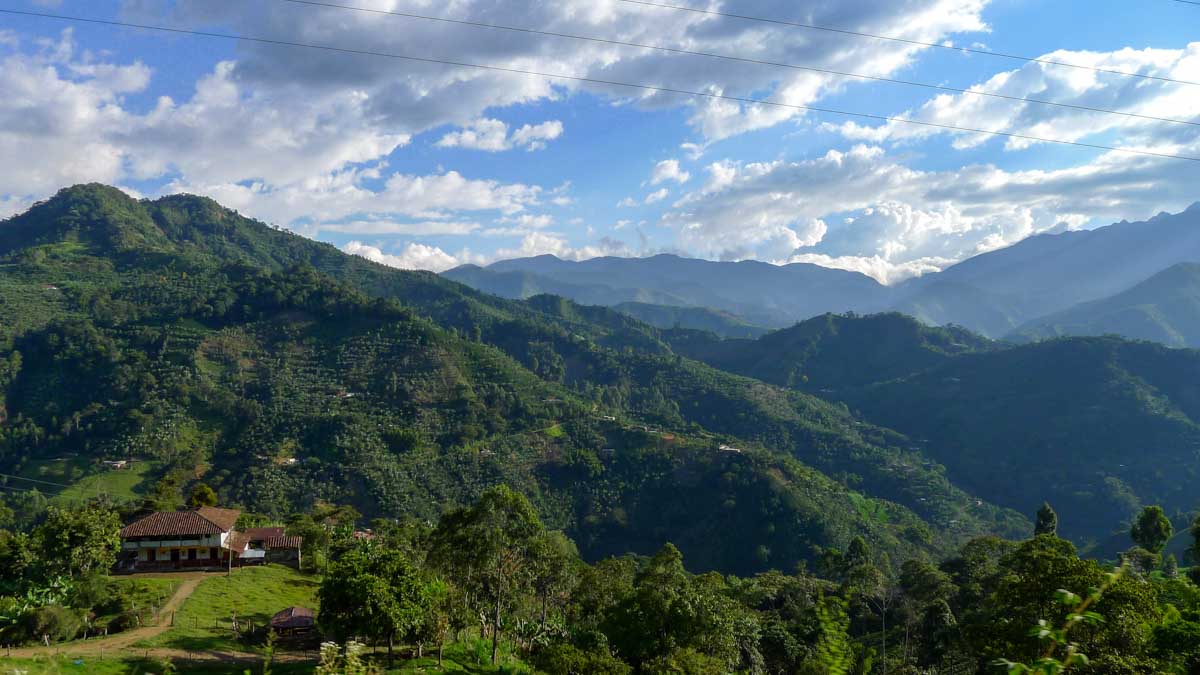The Perfect Colombia Itinerary for 3 Weeks
Some links on this page may be affiliate links. That means if you follow one, see something you like, and purchase it, I may receive a small commission at no cost to you. For more information, see this site's disclosures.
If you’re looking to spend three weeks in Colombia, this itinerary has you covered! It includes colorful small towns, vibrant cities, treks through mountain landscapes, and the picture-perfect beaches of the Caribbean coast.
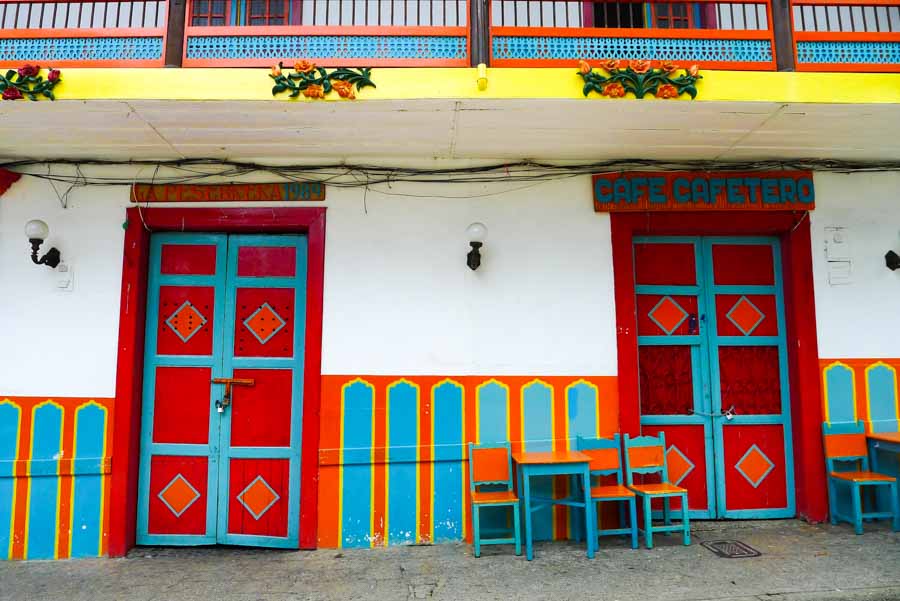
Colombia is an incredible place with so much to see and explore. Although you could never experience it all in three weeks, this itinerary will give you a great introduction to all that the country has to offer. From the charming streets of Cartagena to the snow-capped mountains of the Andes, from the kitesurfing haven of Cabo de la Vela to the extraordinary street art of Medellín, Colombia has something for almost every traveler.
I’ve tried to achieve a balance between active and relaxing destinations in this itinerary. You’ll alternate between busy days, with lots of city sightseeing or hiking, and days when you just lie in a hammock and look out at the ocean. I’ve provided a suggested timeline for your trip as well, but you may want to add or subtract a day here or there to better suit your interests.
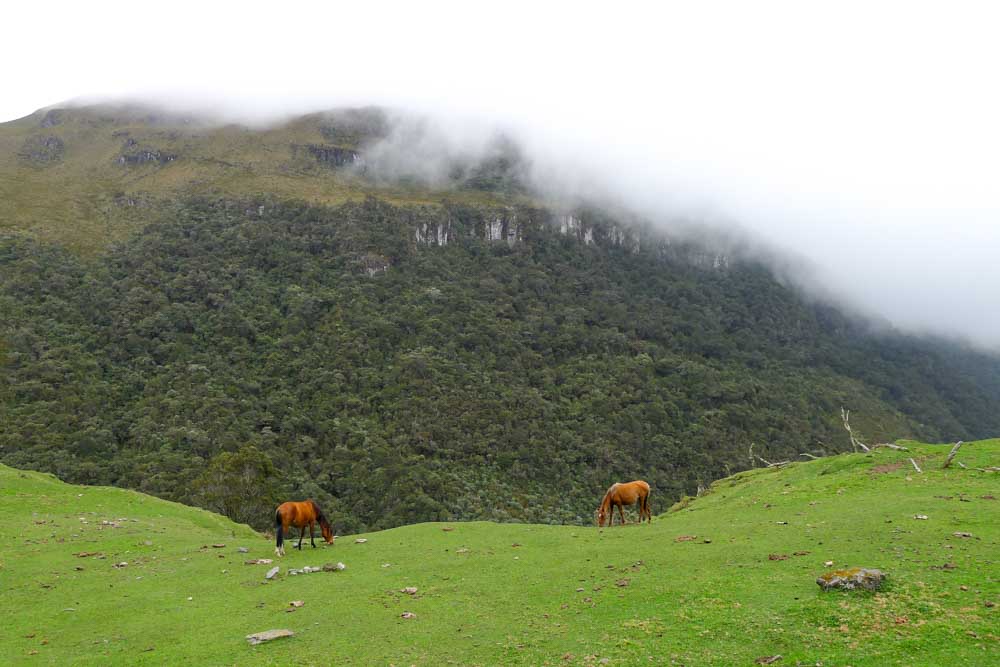
I’ll also note that in order to cover everything on this list in 3 weeks, you’ll need to grab a night bus or two. If you have more time, definitely stick around an extra couple of days when you find somewhere you like. I spent almost 5 weeks exploring the places on this itinerary.
With that said, let’s jump right into the best places to visit on your first trip to Colombia!
Jump to...
Bogotá
2 days
Most Colombia itineraries will start in Bogotá, the capital of Colombia and home to its largest airport.
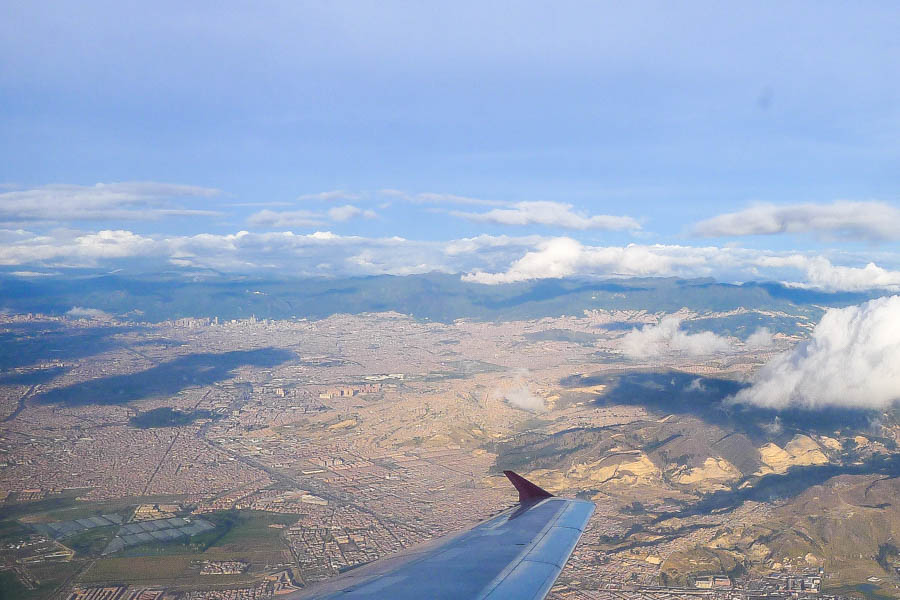
Bogotá is a huge, sprawling city. One of the best ways to take it all in is to visit Monserrate, the mountain visible from almost every part of the metropolis below. Towering over Bogotá’s historic center, the summit offers amazing views and a great opportunity to orient yourself. (You can walk to the top, but unfortunately robberies are a concern on this path. It’s safer to take the cable car or funicular.)
Spend the rest of your first day exploring La Candelaria, Bogotá’s historic center and the neighborhood where you’ll find many of the city’s most interesting museums, plazas, and churches. La Candelaria is also famous for its street art, which you can explore through various walking tours.
Day trip to Zipaquirá
On your second day in Bogotá, consider heading out on a day trip to Zipaquirá.
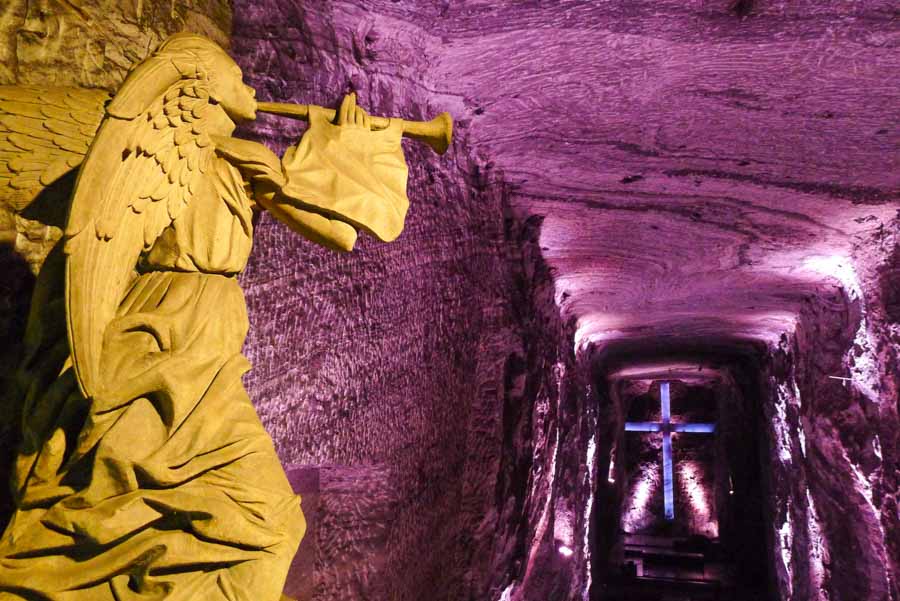
Located about an hour north of Bogotá by bus, this small city is home to one of the most unique churches you’ll likely ever visit. The Catedral de Sal (Salt Cathedral) was built entirely underground within the sprawling tunnels of an old salt mine.
The Valle de Cocora, Los Nevados National Park, and Salento
2-4 days
After a few days of city living (and adjusting to the Andean altitude), it’s time to head out into some nature! If you’ve researched traveling in Colombia at all, you’ve likely come across photos of the stunning Cocora Valley.
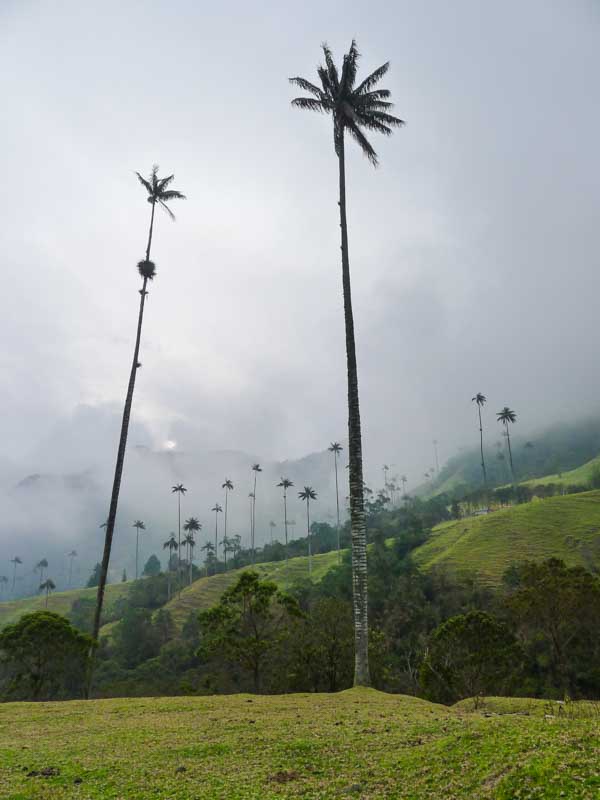
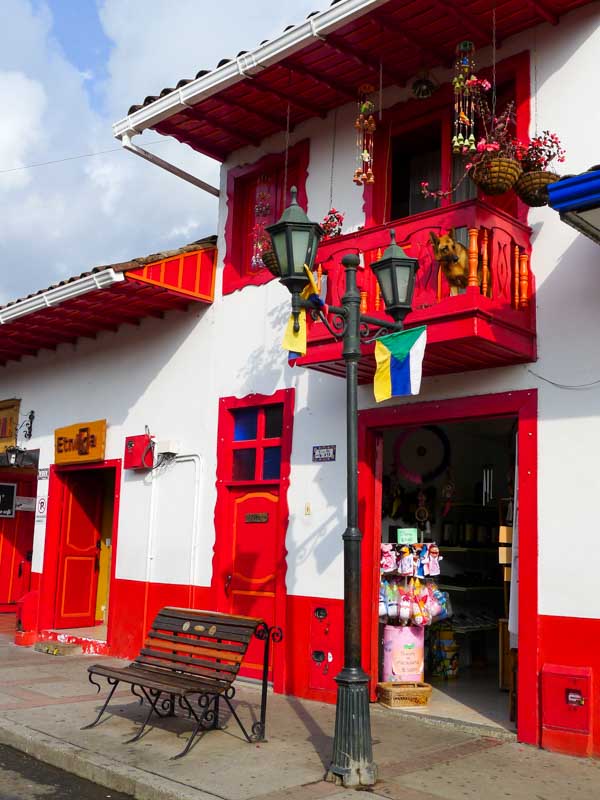
This is where you’ll find those impressive Quindío wax palms decorating the lush green hillsides of the Colombian Andes. They look impossibly tall (and are in fact the world’s tallest species of palm tree, reaching up to 200 feet in the air).
Even if you’re not much of a hiker, I highly recommend a day hike through this beautiful valley. And if you are a hiker, there are a lot of really epic options for you. The Valle de Cocora is something of a gateway to Parque Nacional Natural Los Nevados, a national park encompassing a number of volcanos in the Cordillera Central.

There are several multi-day treks that will take you through the high-altitude páramo to climb some of Colombia’s most impressive peaks. I did a 3-day trek to a 5,000-meter glacier on the Nevado de Tolima volcano, and it was truly the highlight of my entire Colombia itinerary.
The best place to base yourself for trips to the Cocora Valley and Los Nevados National Park is pretty little Salento. Located in the heart of Colombia’s coffee belt, Salento is one of the most colorful small towns in the country. It’s a lovely place to chill out for a day before or after your hike. There are also quite a few coffee farms in the area that offer tours.
Jardín
2 days
Next up on your 3-week Colombia itinerary is Jardín, another gorgeous small town, located a little more than halfway to Medellín from Salento.

Note that there aren’t any major, must-see sights here. Jardín’s main draw is that it’s a charming, beautiful window into small-town life in Colombia. If you’re short on time, this may be one to skip and save for next time. It looks like it’s “on the way” from Salento to Medellín, but the detour is actually pretty time consuming. (That said, the bus ride to and from Jardín was one of the most beautiful I’ve ever taken. I unfortunately lost many hours of my day to a road closure and diversion, but I couldn’t even be upset. This part of Colombia is truly breathtaking.)
Once in Jardín, make sure to spend some time people-watching with a coffee in the colorful main square. I also highly recommend taking the small cable car (known as La Garrucha) to a gorgeous viewpoint overlooking the pueblo and hiking back to town.
Another popular activity is a hike to the nearby Cueva del Esplendor, a small cave with a beautiful waterfall running through the ceiling.
Medellín
3 days
Now that you’ve spent some time enjoying a slower pace of life, it’s time to head back into one of Colombia’s bustling cities.
Medellín is one of those places that convinces people to stay a while. It’s become one of the world’s most popular hubs for digital nomads and long-term travelers in recent years. There are a lot of reasons for this, but the city’s comfortable year-round weather, lively energy, and affordable cost of living are at the top of the list.


With just a few days, you’ll barely have time to scratch the surface of Medellín, but you can still get a solid introduction to the city.
You can start with a free walking tour in the city center. These tours are led by knowledgeable, personable local guides who are well-versed in the history of Colombia and Antioquia province in particular. Tours are donation-based and typically last 3 hours, taking in downtown Medellín’s most famous squares, buildings, and public art installations.
Another highly recommended activity in Medellín is a guided tour through Comuna 13, a neighborhood famous for its street art and outdoor escalators through steep, winding streets. Guides show you the best and most famous artwork, offer insight into the meaning and symbolism of the pieces, and provide hugely important historical context.
I definitely recommend spending one of your days here on a day trip to Guatapé. (See below.) Back in Medellín, there are plenty of options for whatever time you have left in the city. Visit an art or history museum, take one of the city’s famous cable cars to Parque Arví, or just chill in a café in the leafy Poblado district.
Day trip to Guatapé
This small town is known for its colorful buildings and the nearby Peñón de Guatapé, a large stone visitors can climb for 360-degree views of the surrounding countryside and the Peñol-Guatapé reservoir.

You can travel independently from Medellín by bus or take a tour with transportation included. (For the latter, I recommend booking one that includes a boat tour of the lake!)
Adventure-seekers might be interested in…
Guatapé + Paragliding: You’ll go paragliding in the mountains outside Medellín first, then head over to Guatapé to climb that big old rock!
Horseback riding outside Guatapé: A full-day trip that includes a tour of Guatapé and 2 hours exploring the beautiful countryside on horseback.
Canyoning on the Guatapé River: Definitely one of the more unique activities in the area. A fun and challenging day swimming, jumping into pools, and rappelling down waterfalls. (Note that it doesn’t include transportation or a tour of the city itself. I recommend exploring Guatapé the day before and spending the night.)
Cartagena
1-2 days
Next up: the Caribbean coast! Beautiful Cartagena has cobblestone streets, colorful facades, and a lively, tropical vibe.
Note that getting here by bus from Medellín will take you 12-16 hours, so budget a whole day (or night) for the journey. (Alternatively, flights take just over an hour.)

Once again, one of the best ways to get your bearings is to join a free walking tour. That said, Cartagena is much smaller than Medellín, and much, much smaller than Bogotá. The major tourist sights are concentrated near the old colonial center in the west of the city, next to the sea. Although I always enjoy the additional context provided by a local guide, you’re not likely to get lost here, and you can certainly get the lay of the land on your own.
The two main neighborhoods you’ll want to explore are the historic center and Getsemani, another interesting barrio just south of the Old City walls. There are colorful cobblestone streets, lively plazas, old colonial churches, interesting museums, and beautiful murals to discover.

I should note that Cartagena’s Old Town is a very touristy place. As beautiful as it is, I wouldn’t blame anyone for checking it out for a day and then moving on. I still recommend two days, though, especially if you want to sample Cartagena’s legendary nightlife. It can be hard to pack a lot of sightseeing in in the kind of stifling heat that is common here. If you have the days to spare in your Colombia itinerary, give yourself some time to enjoy a soursop smoothie with a book in an air-conditioned café.
Tayrona National Park
1-2 days
Now this is almost certainly somewhere you’ve been dreaming about since you started planning your trip. Tayrona National Park lands on virtually every Colombia itinerary – whether for 3 weeks or 3 days. The clear blue water set against a backdrop of lush jungle has made this one of the most popular beach destinations in Colombia.

As we all know, though, this isn’t always a good thing! The crowds in Tayrona can be overwhelming, especially during high season (December – January, June – July), weekends, and holidays.
You can mitigate this somewhat by spending the night in the park. As day trippers must leave Tayrona before 5 p.m., the beaches become considerably less busy by the late afternoon. You can rent tents and hammocks or bring your own – just note that you have to stay in designated campsites.
There are also bungalows (ranging from simple to quite luxurious) for those with more room in the budget.
The best beaches in Tayrona National Park require a few hours of walking to reach them. Cabo San Juan, arguably the most beautiful of them all, is the one you’ll likely recognize from blogs, guidebooks, social media.

There are two ways to get there. From the main entrance at El Zaino, you can take a shuttle to Castilletes, near Cañaveral beach, and walk about two hours to the west. The flat trail leads you through the jungle past several other beaches.
The quieter but more challenging option is to hike in from Calabazo, about 10 kilometers west of the main entrance. It takes 3.5-4 hours to reach Cabo San Juan from here, and there is a fair bit of uphill and downhill hiking involved.
An important note about periodic closures of Tayrona National Park
Note that Parque Nacional Natural Tayrona closes for several two-week periods every year. These typically fall in early February, early June, and late October/early November. Make sure to plan around these dates so you don’t miss one of the highlights of Colombia!
You can verify the exact dates of the closures, as well as find other information about entry fees and opening hours, on the official government website for the park.
Costeño Beach or Palomino
2 days
For a beautiful beach with far fewer people, hop on a bus heading east from Tayrona. You have a few options if you’re looking for long, empty stretches of sand.

The stop for Costeño Beach is only 15 minutes up the road from the El Zaino entrance where you’ll exit Tayrona National Park. Note that there is no town here to speak of – it’s just a couple of hostels and hotels along the beach. (My bus driver hadn’t actually heard of it.)
If you want somewhere with a little more going on, head about 45 minutes further to Palomino. This is still a very chill place, but it’s livelier than Costeño Beach – there are places to eat and drink that aren’t your guesthouse. You can also spend a fun day tubing down the nearby river if you get bored of lying on the beach!
Cabo de la Vela, Punta Gallinas, and the Taroa Sand Dunes
3-4 days
This is the most off-the-beaten-path suggestion on this three-week Colombia itinerary. Visiting La Guajira, the northernmost department in the country, takes a fair bit of effort. It’s a hot, dusty journey, and there are no creature comforts once you get there – this is one of the poorest regions in Colombia.
It is also unlike anywhere else, with remote desert beaches and an opportunity to learn about local Wayuu culture.

You’ll need to book a tour to visit the incredible Taroa Sand Dunes and Punta Gallinas, the northernmost point in mainland South America. As for Cabo de la Vela, one option is to travel there independently, arranging a tour to the other sights once you arrive. I definitely recommend this approach if you want to spend a day or two kitesurfing.
Alternatively, you can book tours that include all of the above sights. The most common place to do this is Riohacha, but I also saw tours offered in Palomino and a few other spots along the coast. You can read about my experience in La Guajira for more details.
Note: A more common choice for a 4-day tour in the north of Colombia is the Ciudad Perdida trek, which is typically arranged in Santa Marta. I’ve decided to include Cabo de la Vela instead, because it’s a really unique experience… and because I’ve just heard too many stories of food poisoning and bed bugs on the Lost City trek to confidently recommend it here!
Minca
2 days
After a week of intense heat exploring the coast, you’re probably worn out. Higher elevation, and the cool mountain air that comes with it, is the perfect antidote.

This is where the little mountain town of Minca comes in. At just under an hour from Santa Marta (the closest city to Tayrona), it’s a wonderful place to stop on your way back from whatever beaches you’ve chosen to visit further east.
You can hike, swim under jungle waterfalls, or just lie in a hammock and feel the breeze. Go birdwatching or tour a coffee finca. Minca is the perfect place to end your 3 weeks in Colombia.
More Colombia travel
The best beaches from Cartagena to La Guajira: A Caribbean coast itinerary
Minca, Colombia: A mountain escape
Exploring Cabo de La Vela, the Taroa Sand Dunes, and Punta Gallinas
